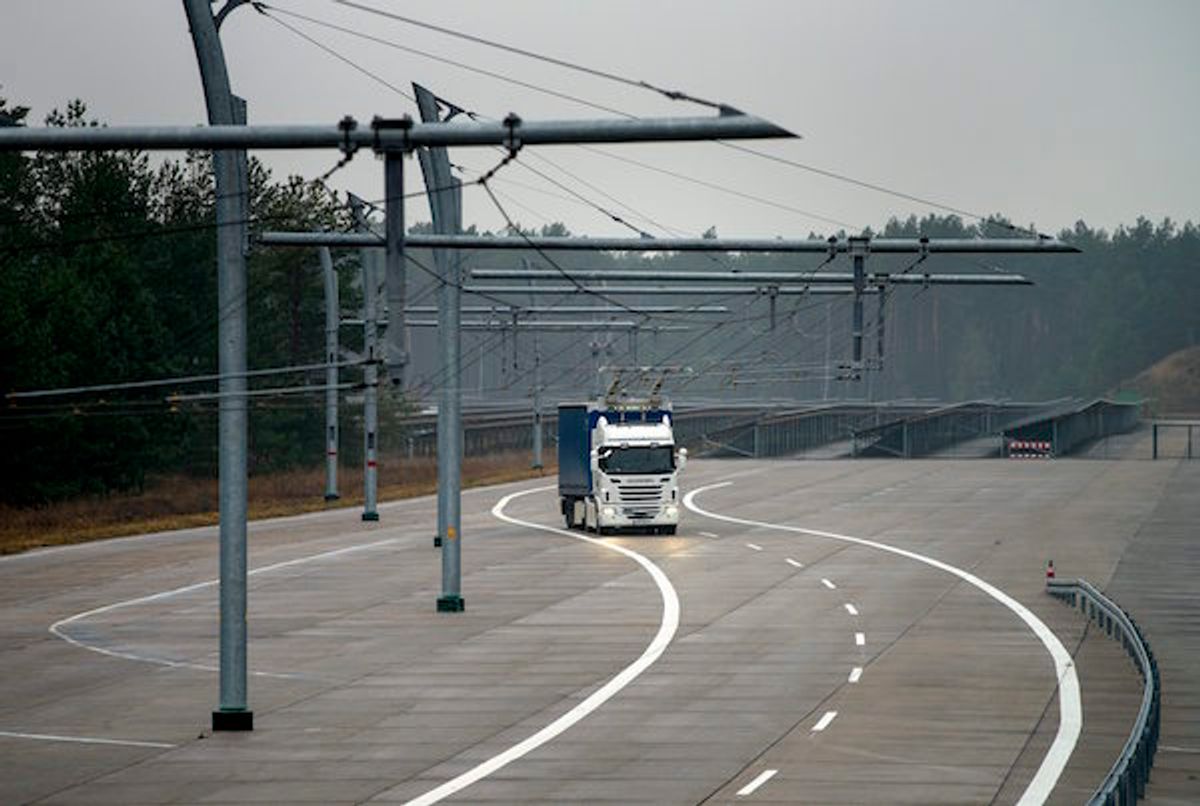Renewables are critical to the future of efficient, clean transportation. For road vehicles, storing those renewables, and then using them only when necessary, is still a major obstacle to commercial success. In Sweden, the government is partnering with the private sector to deploy new technology that could allow electric vehicles to travel on roads indefinitely, without having to worry about lengthy recharging or massive battery packs. Is it fusion power? Dark matter? Black magic? Nope: overhead wiring.
Sweden's latest foray into roads that can provide electric power to vehicles is perhaps one of the least futuristic options possible, but that doesn't necessarily make it any less effective. A two-kilometer pilot stretch of the E16 motorway has been equipped with overhead caternary wires, and trucks modified with pantographs are running tests to see how well the it works.
Power delivery systems like these are nothing new: They've been around since the 1880s, and we still use them all over the place. In crowded city centers, overhead wires are the safest way to provide power to buses and trolleys following fixed routes, and they're also the only way to keep high speed intercity trains fed. Vehicles that run on rails harvest electricity from a single overhead wire, using their tracks to complete the circuit. Buses and other vehicles with tires need a pair of overhead wires instead, and this is the kind of system that Sweden has set up.
The overhead wires provide 750 volts of direct current to the hybrid electric system in the truck through a pair of pantographs. The pantographs can automatically deploy and attach to the wire while the vehicle is traveling at speeds of up to 90 kilometers per hour, meaning that the truck can seamlessly enter and exit a roadway. The truck itself is a hybrid electric, with a 360 horsepower motor that runs on both biofuel and a 5-kilowatt-hour lithium battery pack that provides enough juice to go about three kilometers. That battery storage capacity isn’t much, but it’s easily enough for getting on and off electrified roadways whenever necessary—especially with the biofuel engine as a backup.
This sounds like a great compromise, but before you get your hopes up, it’s not likely that this will happen with your average sedan or light truck. The height required for a safe overhead line (between five and six meters) would render the connection system impractically long for passenger vehicles.
Sweden is also testing a different type of electric road, using conductive transfer technology based on an energized rail embedded in the road surface. The rail is exposed, and special “shoes” underneath vehicles can draw energy from it continuously. The rail is only energized when a vehicle passes over it, and “multiple safety barriers” are in place to minimize the risk of accidental zaps.
Systems like these make sense in the same kinds of situations and locations where you might consider running a freight rail line, except that using trucks on roads instead of trains on rails has a lower cost of entry and is much more flexible. It's also easier to implement on a wider scalee, since trucks don't have to fundamentally change their behavior to benefit. They can follow the same routes at the same times with the same payloads. The only exception: For what is hopefully a significant portion of the trip, they'll be emission free.
These roads will be undergoing testing through 2018. The Swedish government hopes that it will learn enough about what works and what doesn't to help it make informed infrastructure decisions, with the goal of a completely fossil fuel–free vehicle fleet by 2030.
Evan Ackerman is a senior editor at IEEE Spectrum. Since 2007, he has written over 6,000 articles on robotics and technology. He has a degree in Martian geology and is excellent at playing bagpipes.



